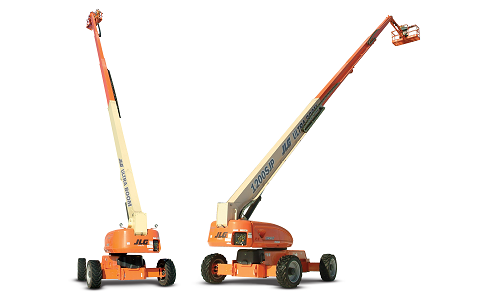Boom Lift Rental: Budget-friendly and Trustworthy Lifts for Any Work
Boom Lift Rental: Budget-friendly and Trustworthy Lifts for Any Work
Blog Article
Maximize Your Budget Plan by Comprehending the Prices Connected With Building Tools Leasings
Comprehending the complete range of costs associated with building and construction equipment leasings is vital for optimizing your spending plan. What techniques can be employed to effectively take care of these prices and make certain a more reliable rental experience?
Introduction of Rental Costs
When considering building and construction equipment rentals, comprehending the linked expenses is paramount for reliable budgeting and task planning. Rental expenses can differ significantly based upon several elements, including devices kind, duration of rental, and place. The initial rental cost usually mirrors the devices's market need and its associated operational capabilities, affecting the general expense.
In enhancement to the base rental rate, supplementary expenses might occur, such as transport charges, fuel surcharges, and maintenance fees. It is necessary to represent these additional expenses to precisely assess the complete price of leasing equipment. Moreover, the rental period can affect pricing; longer rentals may receive discounted rates, while short-term leasings might incur greater everyday fees.

Breakdown of Rental Rates
A detailed understanding of rental prices is important for contractors and job managers aiming to optimize their budget plans. Rental prices for building devices normally contain numerous parts, including base prices, time-based fees, and use fees.
Base rates are the core costs associated with the rental of the devices, commonly determined by the kind and dimension of the equipment. These prices can differ substantially, affected by variables such as tools need, availability, and regional market patterns. Time-based fees, which might be daily, weekly, or monthly, serve to fit different project timelines and rental periods.
In addition, rental rates might include usage fees, which are applicable when equipment is used beyond a specified limit, making sure that the rental company can account for wear and tear. Seasonal demand fluctuations can additionally impact rental prices, with peak building seasons usually commanding greater prices.
Additionally, comprehending the rental company's policies pertaining to upkeep and insurance coverage can offer further understanding right into the overall price structure. By assessing these parts, professionals can make educated choices, ensuring the choice of rental devices lines up with both job needs and budget plan restraints.
Additional Charges to Consider
Understanding the intricacies of added costs is critical for service providers to handle their overall rental costs effectively. Past the conventional rental prices, various additional charges can dramatically impact the complete price of equipment service. These charges commonly consist of distribution and pickup fees, which can vary based upon distance and logistics entailed in moving the tools to and from the job website.
Moreover, some rental business might impose gas additional charges if the tools is returned with much less gas than when rented. It is likewise necessary to know potential cleansing fees, specifically roller machine construction for customized devices that calls for detailed maintenance after usage.

Thoroughly evaluating the rental agreement and clearing up these additional costs in advance can aid contractors avoid unanticipated costs and make certain that spending plans continue to be undamaged throughout the task lifecycle.
Repair And Maintenance Expenditures
Routine upkeep and fixing expenses are commonly forgotten elements that can dramatically affect the overall price of building devices rentals. When renting tools, it is crucial to consider not just the rental charges but also the possible prices connected with keeping the machinery in optimum operating condition.
Several rental business consist of basic maintenance as component of the rental arrangement; however, much more unanticipated breakdowns or considerable repair services can lead to extra expenditures. It's important to assess the rental contract thoroughly to recognize what maintenance services are covered and what duties fall on the tenant.
Moreover, devices that is not well-maintained can bring about ineffectiveness on the task website, potentially boosting and causing hold-ups task costs. To mitigate these threats, it is recommended to perform normal assessments and keep open communication with the rental supplier regarding any issues that emerge throughout usage.
Insurance Policy and Liability Costs
Insurance and responsibility costs are critical parts that can considerably impact the total cost of construction devices leasings (boom lift rental). These costs ensure that both the rental firm and the customer are shielded from potential monetary losses arising from crashes, damages, or burglary throughout the rental period

In addition, clients must be mindful of any kind of deductibles or exemptions in the insurance plan, as these link can influence possible out-of-pocket expenses. Comprehending the terms of any kind of insurance policy protection is vital to prevent unanticipated costs. Eventually, budgeting for insurance coverage and responsibility costs can aid guarantee a smoother rental experience and secure against monetary threats linked with home construction projects.
Verdict
In conclusion, a detailed understanding of the costs linked with building devices rentals is important for effective spending plan administration. Eventually, notified decision-making pertaining to devices rentals adds to the total success of building endeavors.
Rental prices can differ considerably based on several factors, including equipment kind, duration of leasing, and area (boom lift rental). The rental duration can influence rates; longer services might qualify for affordable rates, while short-term services may sustain higher day-to-day fees
By conducting extensive study and involving with reputable rental business, specialists can properly navigate the complexities of rental prices, eventually optimizing their financial sources.
Beyond the common rental rates, various supplementary charges can dramatically influence the total expense of devices leasing. Rental business typically provide responsibility insurance coverage that covers injuries to third celebrations or damages to property, while tools damages insurance policy can cover the cost of repair work or substitute if the rented out tools is damaged.
Report this page